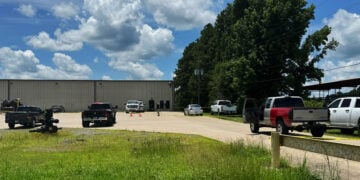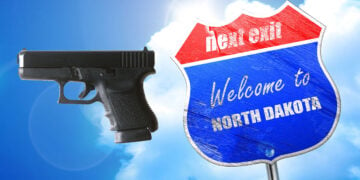Many, if not most, multi-day shooting classes will broach the subject of shooting from different “non-standard” positions. Like much else, I believe this has simply become a sort of dogma that is well ingrained in firearms training. Some of this may be useful, much is simply range theatrics.
When we reference non-standard shooting positions we refer to, essentially, any body position other than a traditional standing position. Such non-standard positions that are taught will be sitting, kneeling, supine, prone, urban prone, and other variations. The thought is that one may find themselves in a variety of positions other than a standard standing position when in a fight. This is, obviously, true, but when comparing the positions many people end up in during real violence, the standard range theatrics of multiple shooting positions does not line up well with this reality.
Positions Actually Used on the Street
To state the obvious, it is possible to find oneself in any position imaginable, and the point of this article is not to suggest that practicing non-standard positions is not warranted, but a survey of real-world violence suggests that there are certain positions that are used over and over during real conflict, and others that are all but absent, even though they are often taught in shooting classes. Here are positions that I have seen many times on video footage of real shootouts, most of which involve citizen self-defense in businesses, parking lots, or other public locations.
Most Defensive Shooting Takes Place While Standing
The majority of defensive gun uses that I have watched over many years involve the self-defender shooting while in a standing position, and often while moving. As a general observation, I would suggest that defensive shooting classes should spend more time teaching realistic shooting-on-the-move techniques and less doing non-standard positional shooting. This won’t happen because teaching useful movement techniques requires doing so one student at a time. While a simple side-step and shoot technique has a place in the real world, and this technique can be taught in a class setting, other relevant movement techniques, such as the ever-effective lateral movement while shooting, can’t be done as a full-class range drill, thus it is often ignored. A survey of video footage of violent encounters and defensive shooting clearly shows that self-defenders are most often standing, and very often moving, when shooting. I would suggest a heavier focus on this skill than on non-standard positions.
Lateral Movement: The Most Useful Tactic
Shooting While Seated
A lot of defensive shootings transpire while the self-defender is in the seated position. In fact, I propose that the most commonly used “non-standard” shooting position in the real world is the seated position, yet it is not taught in most classes. Teaching shooting from seated can be hazardous and has to be closely supervised as those unfamiliar with the technique often flag their own lower extremities when drawing or re-holstering. Also, chairs are needed on the range to do this training. Therefore, it is typically ignored. The single most likely non-standard shooting position to be employed in self-defense is not convenient to teach, so most instructors don’t. I would suggest that, second to shooting on the move, shooting from the seated position should take the next priority for non-standard shooting in training classes.
The fact that self-defense shootings occurs often when the self-defender is seated should come as no surprise. How often are people in seated positions? Often. When places of business are robbed the employees present are often seated behind desks. The self-defender is often seated in the vehicle during carjackings or road rage incidents. This might be the single most likely non-standard position to be used in the real world and I encourage the reader to practice drawing and shooting from seated, which can be done safely in dry practice.
Shooting from Supine
The supine position is actually utilized rather commonly in real-world violence. Supine refers to the individual being flat on their back and shooting from that position. This is not difficult to understand as people often fall during violent encounters. A human tends to back-pedal away from a threat and this unnatural movement often results in the individual ending up falling onto their back. Many self-defense shootings take place from this position, or from a seated position as the defender sits up from the ground, but does not have time to get back on their feet before shooting. Therefore, shooting from the supine position is a skill worth teaching, but must be done so cautiously, as it is possible for people to lose awareness and endanger their legs or feet in the process.
Shooting from the Ground: An Overlooked Skill
Positions Seldom Used
What are the positions that we are not seeing in real violence? Again, there are no rules and nothing is universal, but a survey of violent confrontations suggests the following:
 Based on the observation of many shootouts captured on surveillance cameras, shooting from kneeling is relatively uncommon. I have seen it, so I don’t suggest never practicing it, but it happens very infrequently. It is rare to see someone take a kneeling position. It makes sense in theory that one might kneel to maximize cover, but people tend to be reluctant to give up mobility in a fight. Crouching below a low piece of cover seems more common, and perhaps that would be a more productive technique to train than kneeling.
Based on the observation of many shootouts captured on surveillance cameras, shooting from kneeling is relatively uncommon. I have seen it, so I don’t suggest never practicing it, but it happens very infrequently. It is rare to see someone take a kneeling position. It makes sense in theory that one might kneel to maximize cover, but people tend to be reluctant to give up mobility in a fight. Crouching below a low piece of cover seems more common, and perhaps that would be a more productive technique to train than kneeling.
Similarly, shooting from prone, which involves laying on one’s stomach to get low to the ground, or shooting from urban prone, which involves laying on one’s side, are both less commonly used in civilian self-defense. Again, it can happen, and practicing it just for familiarization makes sense, but spending much time on these techniques is not warranted for the concealed carrier.
I speculate that the emphasis on kneeling, prone, and urban prone positions may come from the military. It is obvious how these positions play a larger role among soldiers in the field who take up many positions around points of cover, but in the world of civilian self-defense, we simply do not see these positions used often.
Final Thoughts
Based on the re-occurring themes actually seen in civilian defensive shooting, I encourage concealed carriers to work on shooting on the move, shooting from seated, and shooting from a grounded supine position. Prioritize these over the positions that are simply not used often in real violence on the street.









